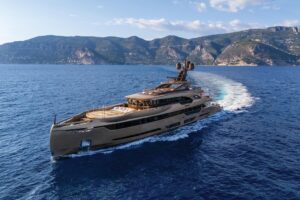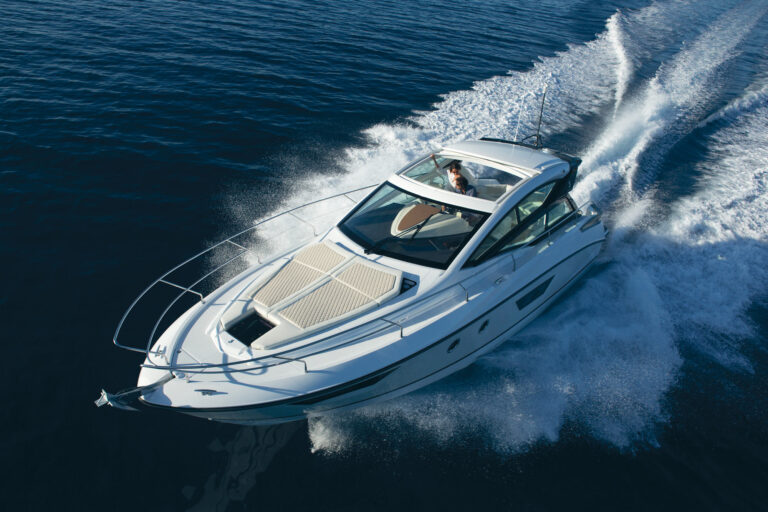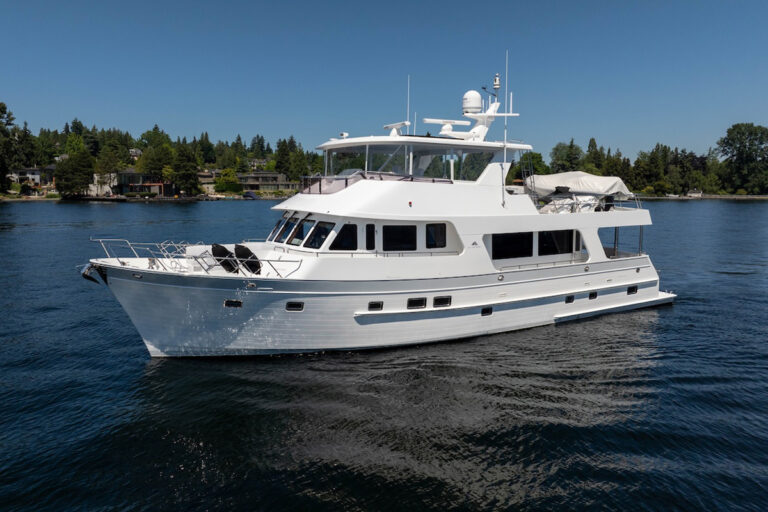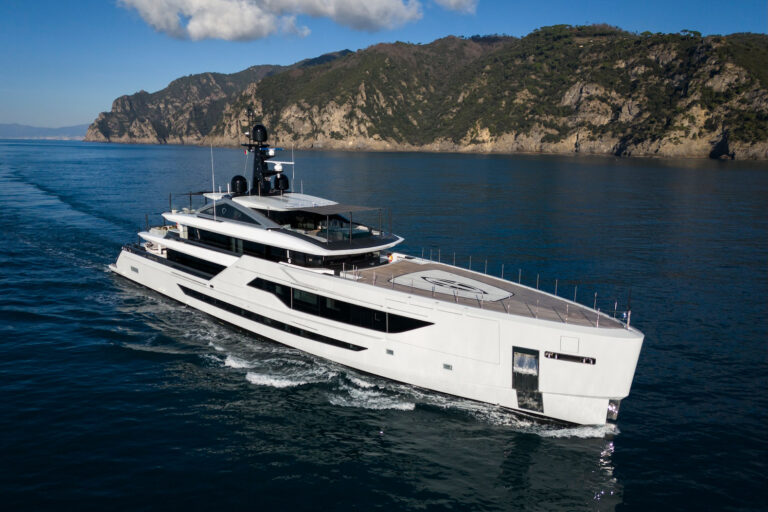It was our fourth night at sea. The engines purred below the sole while our stout little ship gracefully lifted over each beam swell, gently rolling down the other side and then lifting again for an encore. The vibrant full moon beamed through the saloon on the hot, sticky August night, casting a glow over the sleeping crew and illuminating the remnants of passagemaking. Pilot charts, cruising guides and navigation paraphernalia piled high on the chart table, while novels, CDs and magazines lay strewn over the entertainment center. During my watch I tended to the ship’s log, updated our position and checked the engine vitals. Then, as I stood on the side deck gazing up at the myriad stars, I realized the stress and nuisance of shore-side life had been purged. Like every passage before it, this voyage from Florida to Bermuda had renewed the soul. This night, life was about getting to Bermuda-and nothing else.
About once a year, like clockwork, the cobwebs grow, the abrasions of land life sting, and it becomes abundantly clear that their only remedy is escaping to the safety of sea. So, when my friend Peter Swanson invited me to join him on a delivery from Jacksonville, Florida, to Bermuda, I didn’t hesitate for a second with an affirmative response.
I’ve battered my way to Bermuda on several occasions; last summer, however, was the first time I arrived in the island paradise sans mast. I found the 870-mile passage to be just as rewarding and, better yet, full of comforts and conveniences I went without on previous trips. Most yachtsmen who buy voyaging powerboats cruise only coastally, but if you want the tonic of bluewater cruising and have a well-found, ocean-capable vessel, consider a voyage to Bermuda. The rewards may be worth the risk.
In Jacksonville, I met up with , a Great Harbour N37 built by Mirage Manufacturing. Joining Peter were Reuben Trane, a design and marketing consultant for the builder, and Van Dozier, Mirage’s sales associate.
Besides a suitable yacht, the key to any successful powerboat passage is preparation. Good weather, sound mechanical systems, complete safety gear and provisions will ensure your voyage is not only enjoyable, but safe.
The ocean was as smooth and slick as 30-weight oil, and as I perched on the flat cabin top like an adventurer heading through the Sahara on a steam train’s roof, I tried to remember when I had seen the ocean so calm. I determined that this postcard moment was it.
During an 800-mile-plus voyage, of course, you can expect the challenges of foul weather, so a good weather window is paramount. A week before we left, Peter began monitoring the Web site for the U.S. Navy’s Fleet Numerical Meteorological and Oceanography Center (www.fnmoc.navy.mil), which produces good weather-forecast maps out to 144 hours. Our August 19 departure placed us in dead center of hurricane season, so checking the tropical storm forecast and reviewing weather on both sides of the Atlantic was prudent. Peter also reviewed forecasts at NOAA’s site and found useful information at the Bermudan government’s Rescue Coordination Centre (www.rccbermuda.bm). The forecast was for calm winds with 1- to 3-foot seas for at least the first four days, with fouler weather expected as we approached Bermuda. This was the window we had hoped for.
Departing the commercial fuel dock at Fernadina Beach, Florida, we were chased by summer thunderstorms. The first few hours presented the worst weather of our trip. Afterward, Neptune let us off the hook for the remainder of the passage, and except for some gradual 6-foot swells on the fourth day, we encountered nothing but good weather.
“You know, when we get back, everybody is going to say that you guys got lucky with perfect weather, Reuben said. “But that’s the whole point. You look for good weather.
Since there are no West Marines in the middle of the ocean, proper mechanical preparation and safety measures also are vital. Mirage completely serviced ‘s twin 56 hp Yanmar diesels before we departed. Her belly was packed full of spares and fluids, along with every tool necessary for working on the machinery. Moreover, had already cruised up and down the East Coast, spent several months in the Bahamas, cruised the Florida Keys and made a short jump to Cuba. She was shaken down, and all her new-boat bugs were a distant memory.
Peter gave me a few digs when I inquired about a liferaft. It’s a hot topic with Peter, who once in awhile follows the cruising philosophy of Lin and Larry Pardey. (The Pardeys have written such books as Self Sufficient Sailor and Cost Conscious Cruiser.) I’m not saying that Peter, like the Pardeys, thinks that defecating in a cedar bucket is somehow charming, but he does believe more effort and money should be spent on readying the boat and systems than on liferafts. Not a bad argument, but not one I’m willing to test several hundred miles out in the ocean with water climbing around my ankles. Begrudgingly, Peter put a raft on board. In addition, was equipped with an epirb and a ditch bag.
An obvious element of a long powerboat passage is fuel management. A good practice is to plan for a minimal 10 percent reserve. At one point during our third day, we burned pads and computers with a barrage of fuel-consumption calculations. After Reuben finished his methodic figuring, he nonchalantly reached over and turned off the generator powering the air conditioner that had been keeping us cool in the thick August air. He throttled back to 2500 rpm, reducing our speed to an average of 61/2 knots but cutting down on our fuel consumption. It turned out some contrary currents were slowing us down and increasing our fuel burn, demonstrating the importance of daily fuel management during a passage. In the end, we took on only 311 gallons in Bermuda, arriving with nearly 30 percent in reserves, a testament to Reuben’s planning and the N37’s efficient hull.
‘s inverter powered the electric stove, microwave/convection oven and GE refrigerator, so the only downside of not running the generator was the lack of air conditioning (a luxury I dearly love). But we could cook all we wanted. On several sailing trips, eating dinner consisted of slurping down lukewarm Dinty Moore and chasing it with a few gulps of hot, flat club soda. Not so on . Peter stocked the cabinets, refrigerator and freezer with enough vittles to keep everyone plump until returned to the States. Every night was like Sunday dinner. Our autopilot steered a steady course while we came off our watch schedule to sit down to home-cooked meals (one was freshly caught tuna), glasses of wine and good conversation.
We gave up trying to listen to anything of value on the shortwave radio, resisting the call of the Christian ministries urging us to turn our voyage into a crusade. After awhile, we settled on a documentary about an air-guitar contest in Toronto. Four hundred miles from civilization, listening to a report requiring visual stimulus became very amusing.
By the last day, my life revolved around the routine of shipboard life: eating, sleeping, navigation, reading, laundry and showering. After 133 hours, we arrived safely, without incident, in St. George’s. Although we had left only five-and-a-half days before, I felt as if I had been gone for a month. My head was free of cobwebs, my attitude fully adjusted and my fondness of voyaging under power fully intact.








